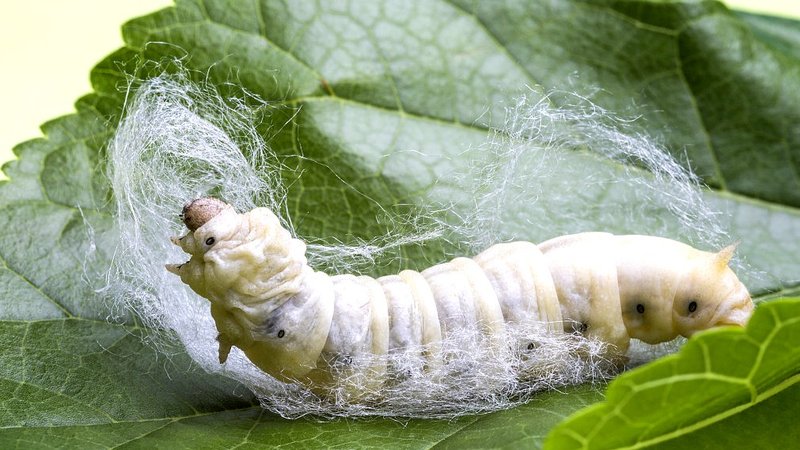
In this guide, I’ll walk you through the ins and outs of transporting silkworms, covering everything from their habitat needs to tips for keeping them secure during the journey. Whether you’re a hobbyist looking to relocate your silkworms or someone working in the silk industry, knowing how to transport these little guys safely is crucial.
Understanding Silkworms and Their Needs
Silkworms, or *Bombyx mori*, are the larvae of the silk moth. They’re well-known for their ability to produce silk, but there’s a lot more to these creatures than just their silky output. They thrive in specific conditions—especially in terms of temperature, humidity, and food. When you think about transporting them, it’s essential to consider these factors to avoid any unnecessary stress or harm.
These worms typically prefer a warm environment, around 70°F to 85°F (21°C to 29°C). This is similar to a cozy room temperature for us! If the temperature drops too low or gets too high during transport, it could affect their health. High humidity levels are also crucial, as silkworms need moisture to stay hydrated and happy. Think of it as their version of a refreshing spa day.
When you’re planning to transport silkworms, consider what they eat too. They primarily feed on mulberry leaves, so ensuring they have access to fresh food is key. Without it, they might not survive the trip. Keeping their food supply handy will help keep them sustained during the journey.
Preparing for Transport
Before you even think about hitting the road, you’ll want to prepare everything needed for transporting silkworms. Start by gathering your materials. You’ll need a suitable container, mulberry leaves, and a way to maintain humidity and temperature.
For the container, choose something that’s breathable but also sturdy. A small cardboard box or a ventilated plastic container works well. Make sure there are enough holes for airflow, but not so many that the silkworms can escape. You might think of this container like a mini mobile home for your silkworms—keeping them safe and sound.
Next, prepare their food. Fresh mulberry leaves are best, but if that’s not available, you can use a mulberry leaf-based silkworm chow. Just be sure it’s packed tightly in the container so they can munch on it during the journey.
Lastly, consider adding a damp sponge or cloth to help maintain humidity. This is like providing them with a little personal spa treatment, keeping everything nice and moist.
Timing the Journey
Okay, you’ve got your container ready, and now you’re probably wondering when to make the move. Timing is everything when it comes to transporting silkworms. Ideally, try scheduling your journey during cooler parts of the day, like early morning or late evening. This helps avoid temperature extremes, keeping your little travelers comfortable.
When planning the trip, think about how long it will take. If you’re going to be traveling for several hours, break it up into sections if possible. Every couple of hours, stop to check on your silkworms. Make sure they’re still fed, hydrated, and comfortable. It’s a little like checking in on a road trip companion—you want to ensure everyone’s doing okay!
If you’re flying or taking a longer journey, be sure to familiarize yourself with any regulations about transporting live animals, as this can vary by location. Honestly, it’s better to do a little homework now than face unexpected hurdles later.
Keeping Silkworms Secure During the Trip
Once you’re on your way, it’s important to keep your silkworms secure. A bumpy ride can cause stress to these delicate creatures. To minimize movement, you can pad the container with soft materials like paper towels or cloth. This will create a comfy space for them and prevent any jostling.
While driving, keep an eye on the temperature inside your vehicle. If the weather is especially hot or cold, consider using portable temperature regulators. A simple thermometer can help, letting you know when adjustments are needed.
Also, avoid exposing them to direct sunlight. Just like us, they can get overheated. If possible, keep the container covered but still breathable, sort of like providing them with a sunshade.
Post-Transport Care for Silkworms
Congratulations! You’ve successfully transported your silkworms. But don’t forget that their needs don’t end when you reach your destination. After the journey, it’s crucial to give them a proper settling-in period.
Start by carefully unpacking them and giving them a moment to adjust to their new environment. Place them in a suitable habitat, ideally one that matches their previous living conditions. Make sure to provide fresh mulberry leaves and check the temperature and humidity levels. It’s like welcoming someone home after a long trip—everything should feel cozy and comfortable.
Watch for any signs of distress, such as lethargy or lack of appetite. If they seem a bit off, don’t panic! Just ensure they have everything they need to recover from the journey. Give them some time to acclimate, and they should bounce back to their usual selves in no time.
Common Mistakes to Avoid
As you embark on this journey, it’s easy to overlook certain details. Here are a few common mistakes to watch out for when transporting silkworms:
- Exposing them to extreme temperatures: This is a biggie. Keep tabs on the environment throughout the journey.
- Forgetting food supplies: Always pack enough fresh mulberry leaves or chow to last the trip.
- Neglecting hydration: Keeping humidity levels in check is essential. A damp sponge can save the day.
- Improper container: Ensure your container is secure but allows for ventilation. You wouldn’t want them crammed in a tiny space!
By avoiding these pitfalls, you can make your transportation experience smoother.
Transporting silkworms safely over long distances doesn’t have to be a chore. With the right preparations and a little mindfulness, you can ensure your silkworms arrive healthy and happy. Remember, they rely on you for their comfort and safety.
So, whether you’re a silk farming enthusiast or just a curious hobbyist, take the time to consider their needs along the way. It’s all about making the journey as stress-free as possible. Happy transporting!

